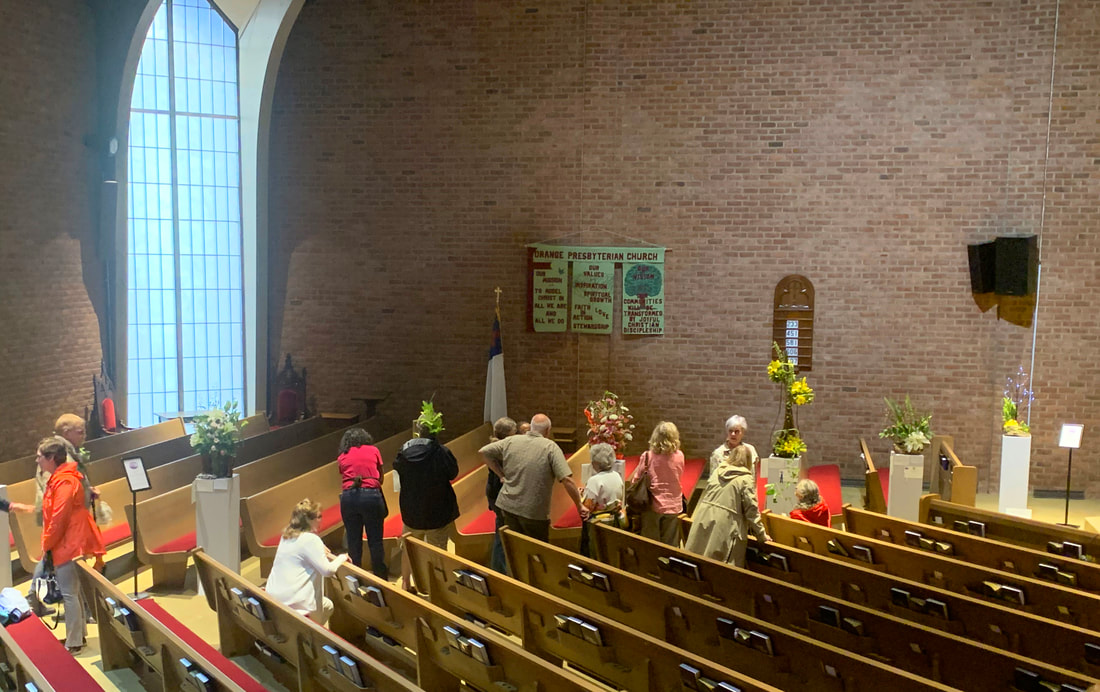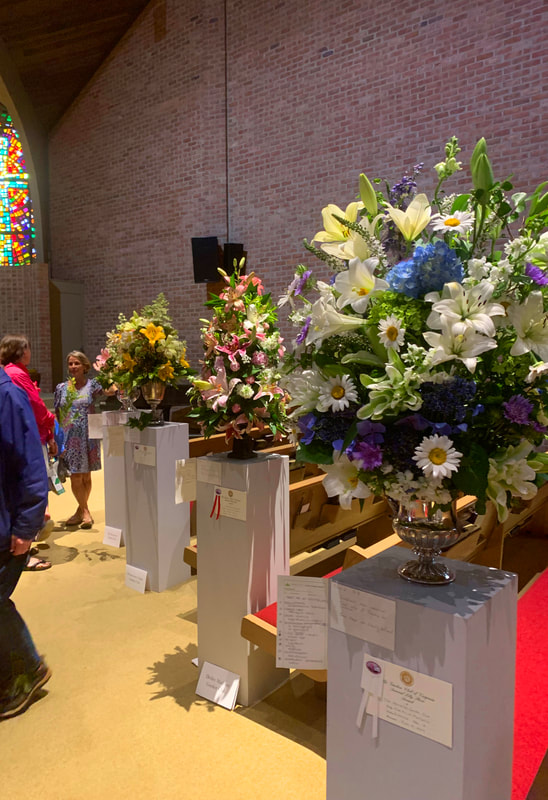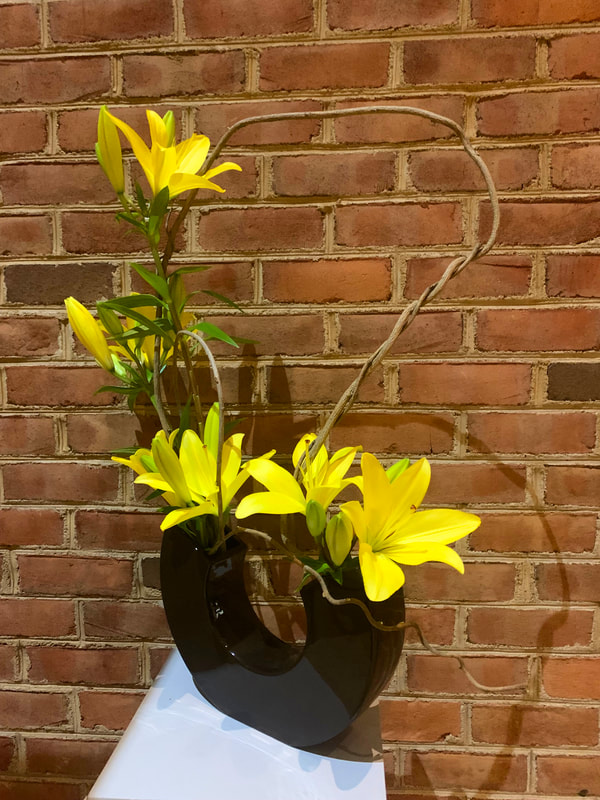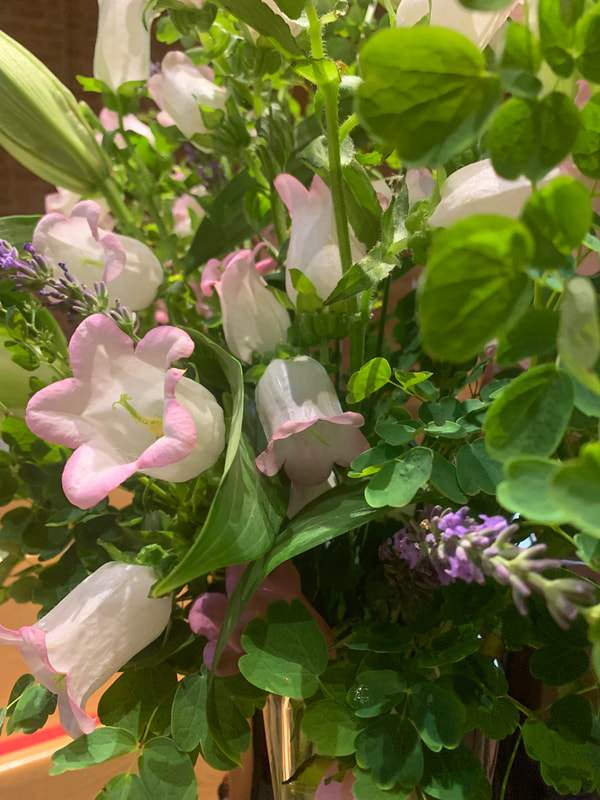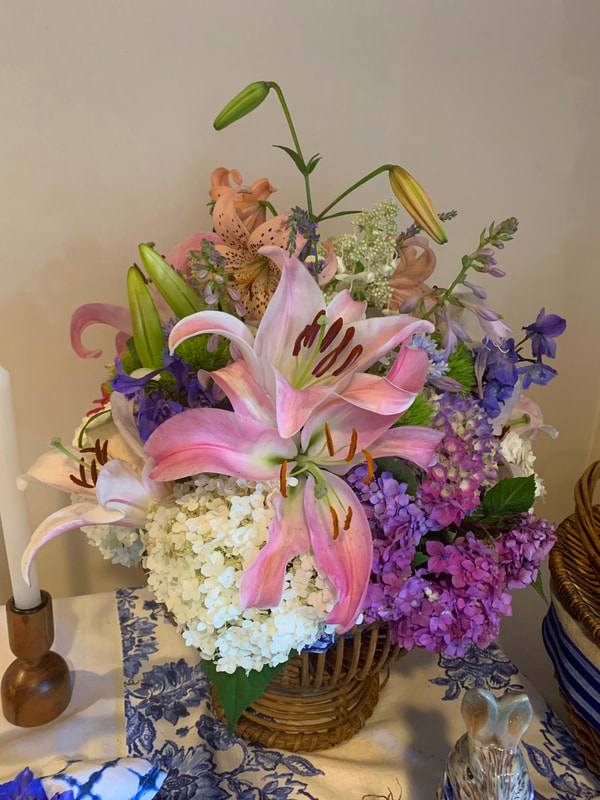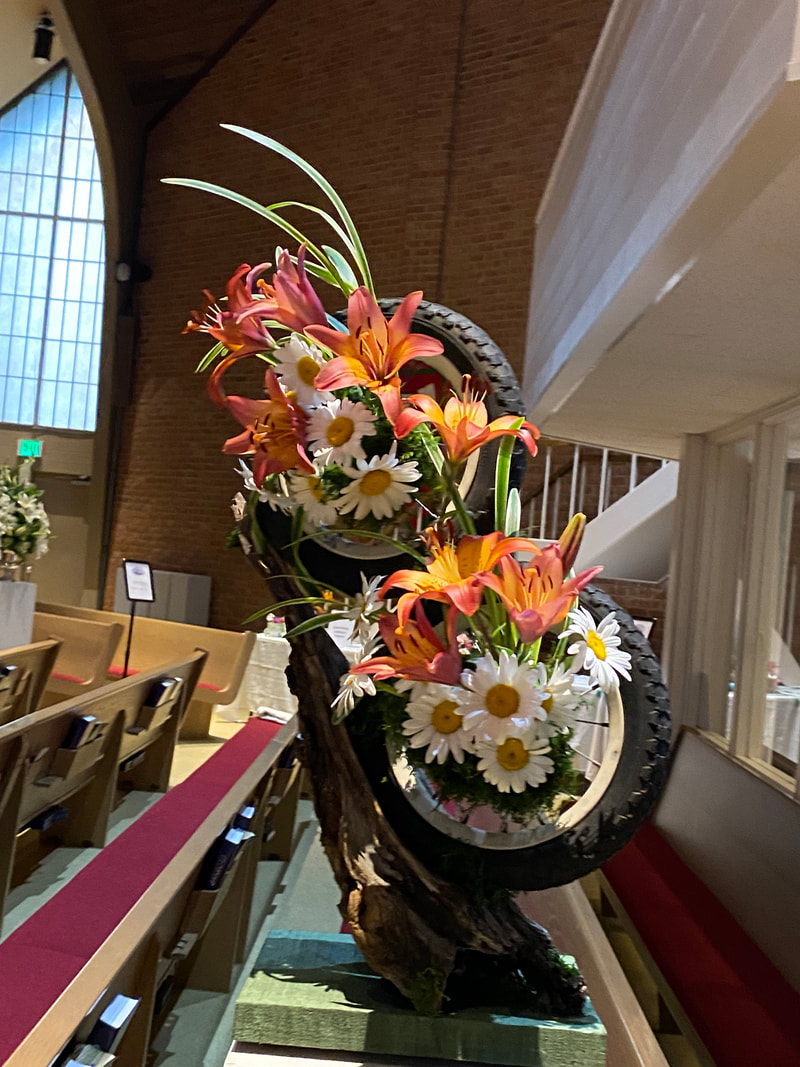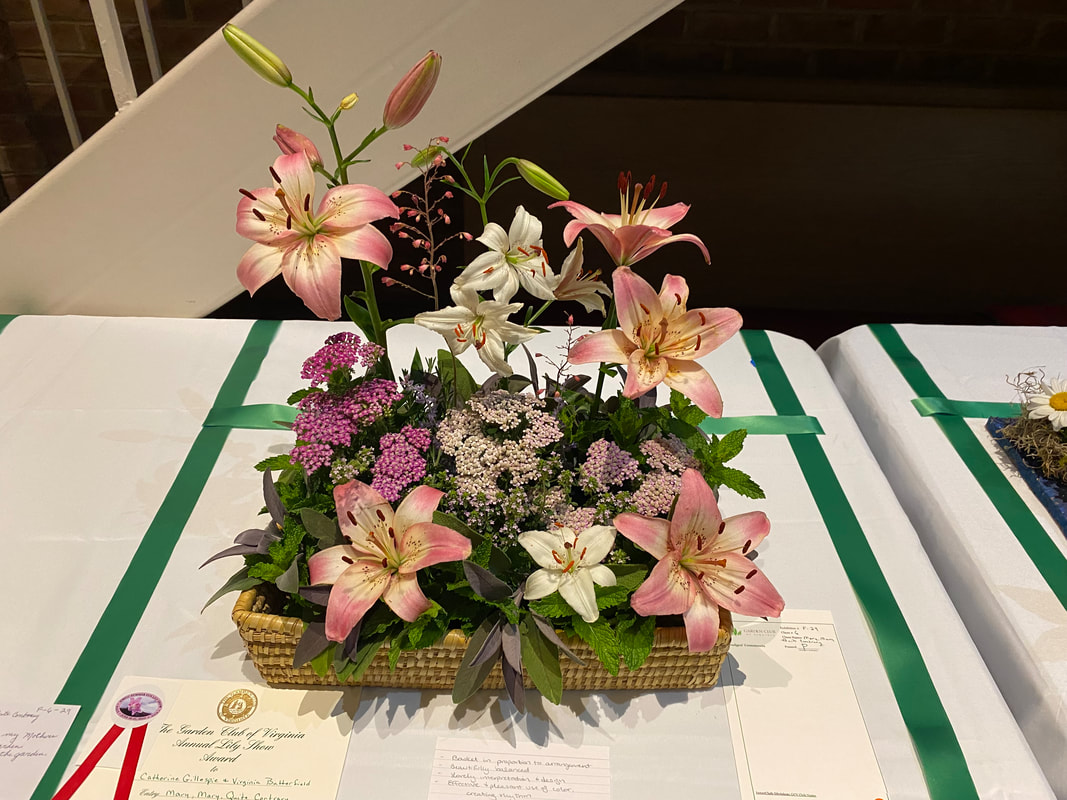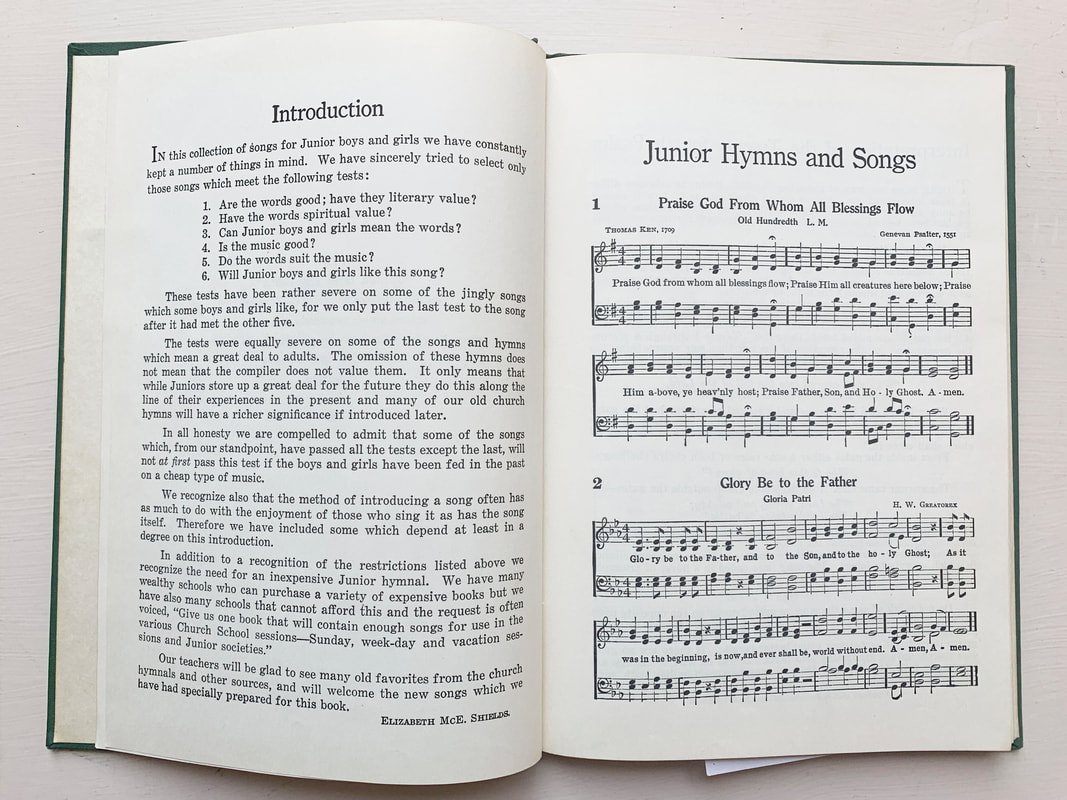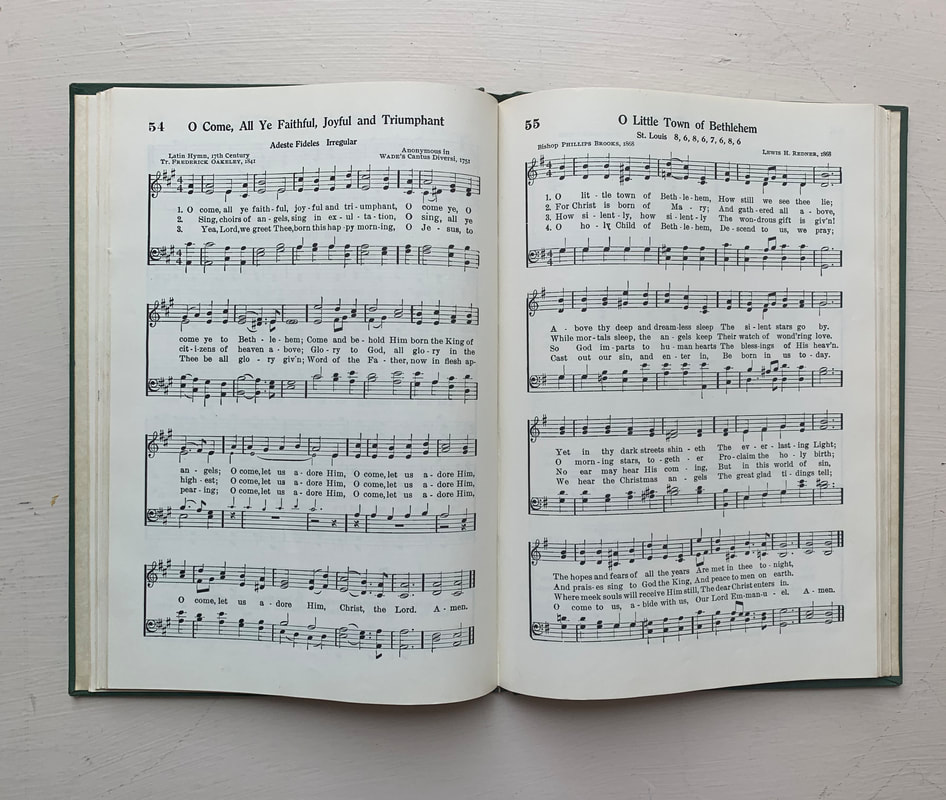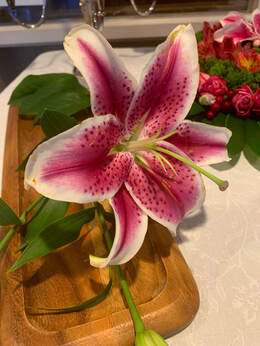 Wednesday, June 21, 2023 the Dolley Madison Garden Club hosted a state-wide lily show. And they did it in the sanctuary of Orange Presbyterian Church. Although it poured rain most of the afternoon, a steady stream of visitors poured in and out of the building. A cloudburst or two couldn't keep these floral enthusiasts away! The displays were stunningly beautiful. And the sanctuary was filled with the most wonderful fragrance. It will be a few years before the Dolley Madison Garden Club will need to host the show again. But when they do, we hope they come back!
0 Comments
 In the church narthex is a small tin communion plate. It sits next to the 1938 youth group song book. Both were recently rediscovered, tucked away among the church's archives. The book was easy to research. But this communion plate remains something of a mystery. It was a mass-produced item. The floral designs were stamped into the metal, and the lip was machine-rolled.  In the middle is an inscription, which could possibly have been hand-stamped. Presbyterian Sunday School Orange, Va. Dec. 1922 It's seen some hard use. The rim is dented, and the patina suggests frequent handling. This little communion plate is a part of OPC's history. Albeit it's one with more questions than answers.  Was this a presentation piece to (or from) the Sunday School? Was the plate used for communion at Youth Group gatherings or just for Sunday School events? Was it ever used in regular Sunday worship? We can only speculate. But it's good to have this tactile piece of history available once again. If you have an opportunity, pick up the plate. And imagine all the hands that held it before you. 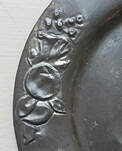 Youth and adults from over a century ago used this humble tin plate to pass the bread. They said the same words and did the same actions we do today in worship for communion. This plate is not just a historic curiosity. It's a reminder of the continuity of this church's faith over the past 175+ years. Ralph Graves, Communications Team  In our narthex is a little piece of history. It’s a copy of “Junior Living and Songs.” OPC's youth groups sang from this 1938 songbook right before the Second World War. The book is well-used, and it’s a cultural artifact. The Presbyterian Committee of Publication The book’s original copyright is 1927 by the Presbyterian Committee of Publication. This organization started in 1862, after the start of the Civil War. The Presbyterian Church of the United States of America (PCUSA) split over the issue of slavery. Southern Presbyterians established a separate denomination. It was the Presbyterian Church in the Confederate States of America (PCCSA). The PCCSA was virtually identical to the PCUSA. But they had to build new support organizations. One such was the Presbyterian Committee of Publication, established in Richmond, Virginia. This was the publishing arm of the PCCSA. After the war, PCCSA renamed itself the Presbyterian Church in the United States (PCUS). It remained separate from the PCUSA. The Committee on Publication printed a variety of materials. Sunday School periodicals, instruction materials, books, hymnals, and songbooks poured out of Richmond. “Junior Living and Songs” was one such publication.  The original ATS building in Richmond, VA, 1914. The original ATS building in Richmond, VA, 1914. The Assembly Training School In 1914, the PCUS established the General Assembly’s Training School for Lay Workers (ATS). The original location was at No. 6-8, North Sixth Street in Richmond. The school trained men and women entering the field of Christian education. It included departments on the English Bible, Christian Doctrine, Missions and Church History, and Christian Sociology. Future youth leaders could study Sunday School Pedagogy and Young People’s Work, Physical Education, and Music. For those wanting to serve in the community, there were departments of Elementary Medicine and Hygiene, and Domestic Science and Arts. ATS became the Presbyterian School for Christian Education in 1959. PCUS reunited with PCUSA in 1983. And in 1997 the school became part of Union Presbyterian Seminary.  Elizabeth McE. Shields Elizabeth McEwen Shields. edited “Junior Living and Songs." She was the Lecturer on Sunday School Pedagogy at ATL. Shields also served on the Presbyterian Board of Christian Education. She was the Director of Children’s Work. Shields joined the faculty when the school was established. And remained there until her retirement in 1950.Besides her work ATL she was also a hymn-writer. Shields is credited with over 35 hymns for children. Shields had a clear idea of what a collection of songs for youth should be. In the preface, she lists her criteria for selecting the songs: Are the words good: have they literary value? Have the words spiritual value? Can Junior boys and girls mean the words? Is the music good? Do the words suit the music? Will Junior boys and girls like this song? Shields was aware that most of the PCUS churches weren’t in big cities such as Richmond. They were scattered throughout the rural South, with small congregations and limited budgets. In the preface, she wrote that this book responded to small churches’ requests. They had asked to "give us one book that will contain enough songs for use in the various Church School sessions -- Sunday, week-day, and vacation sessions and Junior societies." From PCCSA, through ATS, to PCUS The copy in our narthex looks well-used. I think Professor Shields would be pleased. Next time you come to church, take a moment to leaf through its pages. And hold a piece of history in your hands. - Ralph Graves Communications Team |
Archives
April 2024
Categories
All
|


